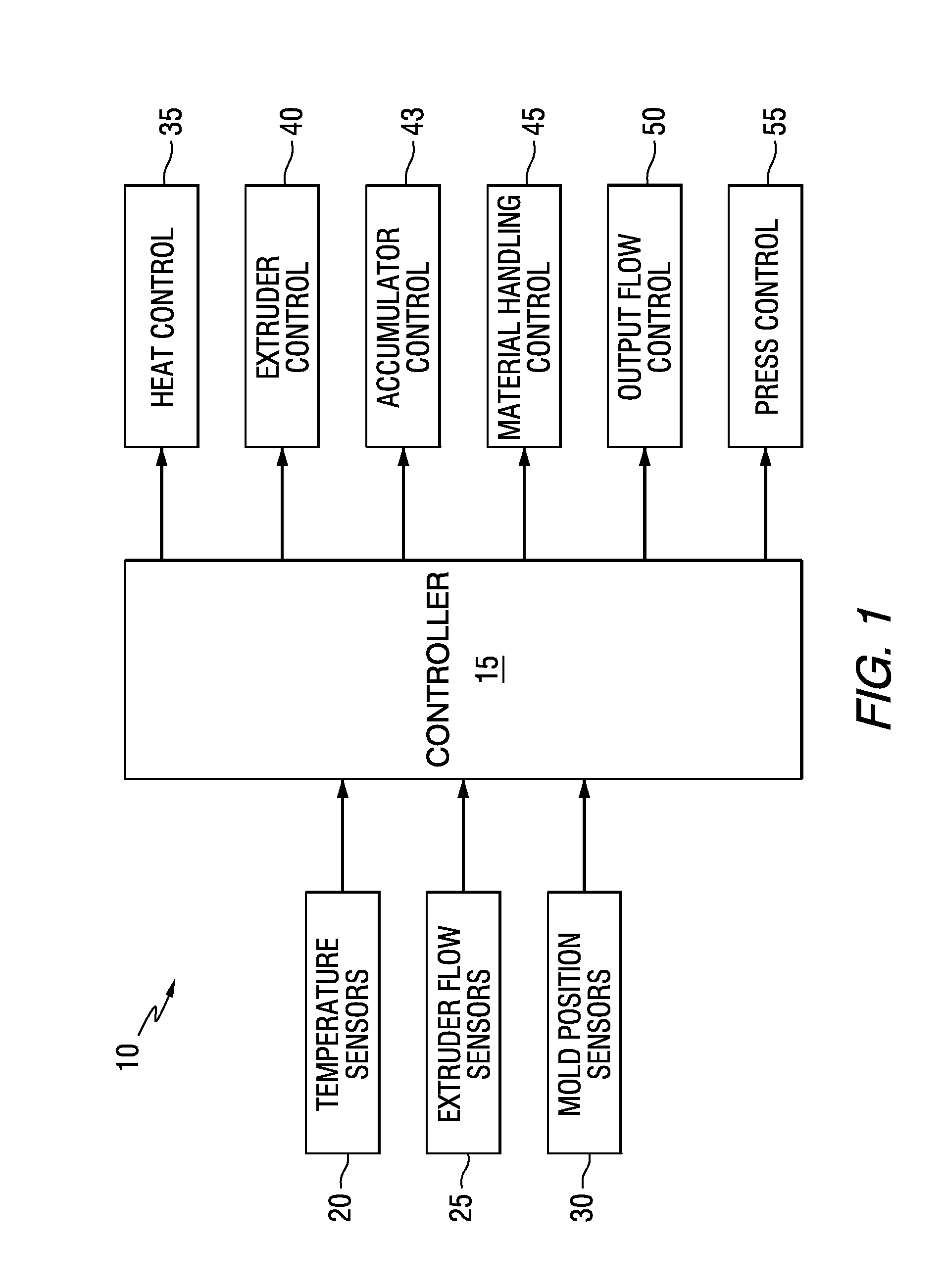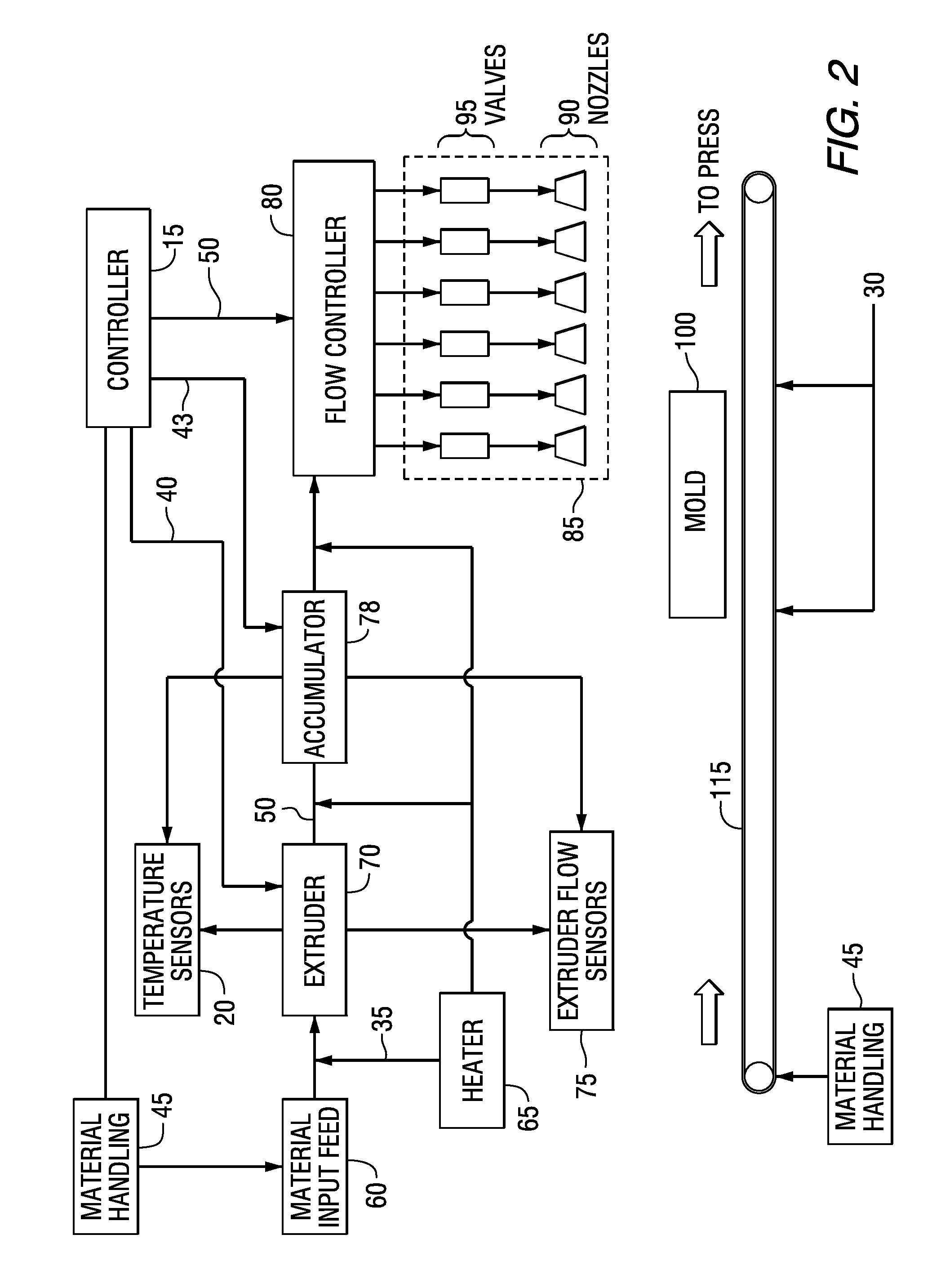Apparatus and method for molding plastic materials
a technology of plastic materials and molding apparatus, which is applied in the direction of dough shaping, application, manufacturing tools, etc., can solve the problems of too expensive or impractical to produce large, voluminous or very heavy parts using this method, and the slowness of the pellet method, so as to achieve a fine level of control
- Summary
- Abstract
- Description
- Claims
- Application Information
AI Technical Summary
Benefits of technology
Problems solved by technology
Method used
Image
Examples
Embodiment Construction
[0030]Referring now to FIGS. 1 and 2, the system 10 is controlled by central controller 15. Central controller 15 is comprised of a computing device of a known type, having processor, memory and I / O capabilities. Central controller 15, in addition to human input devices for the purpose of programming and monitoring, has inputs from various sensors throughout system 10. These include temperature sensors 20, extruder flow sensors 25 and, optionally, mold position sensors 30. It is to be specifically noted that system 10 may be adapted for single mold use, in which a single mold is manually positioned for filling and no conveyor or other transport system is necessary. Extruder flow sensors 25 may additionally be positioned in conjunction with an optional accumulator 78 for downstream flow information.
[0031]Central controller 15 includes a variety of outputs, in addition to those intended for human monitoring, programming and control. Heat control circuit 35 is utilized to maintain adeq...
PUM
| Property | Measurement | Unit |
|---|---|---|
| molten plastic | aaaaa | aaaaa |
| surface feature | aaaaa | aaaaa |
| temperature | aaaaa | aaaaa |
Abstract
Description
Claims
Application Information
 Login to View More
Login to View More - R&D
- Intellectual Property
- Life Sciences
- Materials
- Tech Scout
- Unparalleled Data Quality
- Higher Quality Content
- 60% Fewer Hallucinations
Browse by: Latest US Patents, China's latest patents, Technical Efficacy Thesaurus, Application Domain, Technology Topic, Popular Technical Reports.
© 2025 PatSnap. All rights reserved.Legal|Privacy policy|Modern Slavery Act Transparency Statement|Sitemap|About US| Contact US: help@patsnap.com



